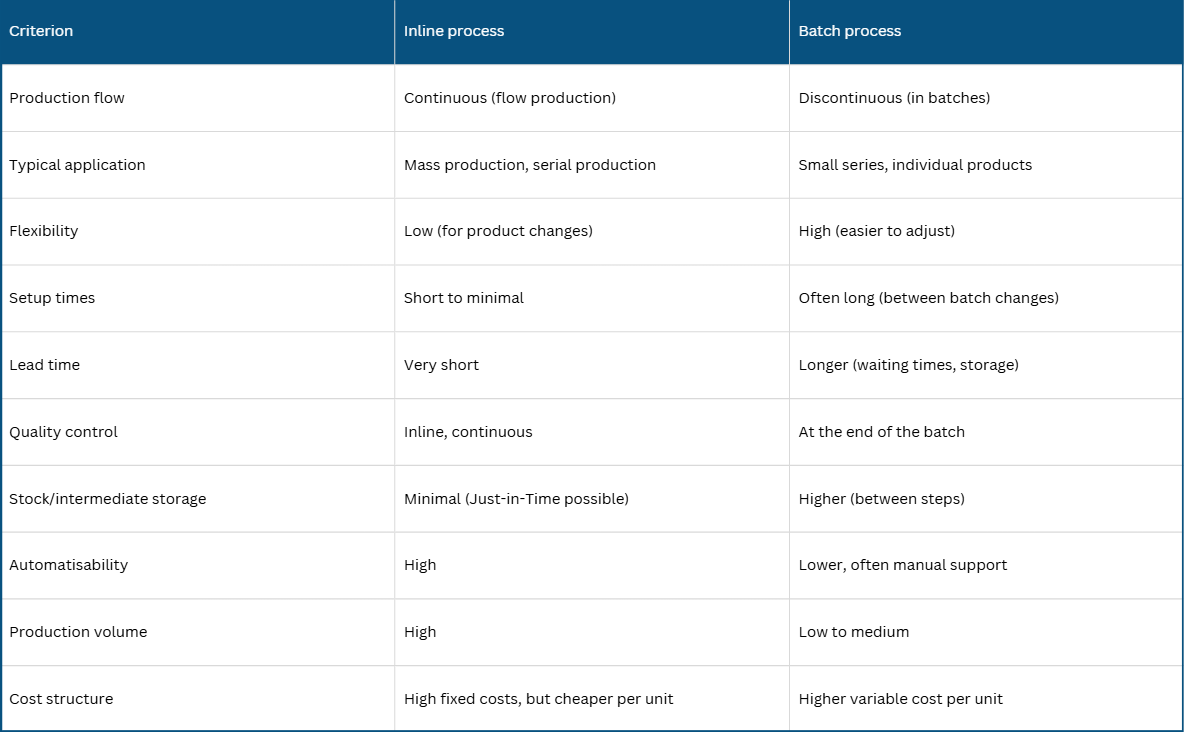
We mix, foam, and dose your media in a single production step. This resource-saving process is made possible by the inline method.
An inline production process (also known as “flow production”) and a batch process (also known as “batch production”) differ fundamentally in their organization and application. Compared to the batch process, the inline process offers several advantages, especially in terms of efficiency and quality.
The precision of the inline process makes it possible to mix and/or foam dosable media according to a precise recipe in a single step. The media can have different viscosities, from gaseous to liquid or solid.
Here are the most important advantages of an inline production process over a batch process:
✅ 1. Higher efficiency and speed
Products move directly from one production step to the next without long waiting times.
Less intermediate storage and shorter production time per unit.
✅ 2. Lower storage costs
Fewer warehouses needed, since materials are continuously processed.
Reduced stock of semi-finished products.
✅ 3. Better process control
Real-time monitoring of production is possible.
Errors can be detected and fixed faster. Quality control can happen inline (e.g., with sensors or camera systems).
✅ 4. Continuous material flow
Material is constantly fed and processed → avoiding idle times. Well-suited for mass production with high output.
✅ 5. Automation potential
Inline processes are easier to automate than batch processes. Machines can be precisely aligned with each other.
✅ 6. Reduced lead time
Since there are no waiting times between steps, the total time from raw material to finished product is shorter.
✅ 7. Fewer manual interventions
Automated processes need less staff and reduce the risk of human error.


Mixing systems from Hansa Mixer mix all liquids as part of a continuous process, even with dry components. We have developed special continuous mixers and dynamic mixers that finally replace the conventional process of the batchwise mixing of solids. This not only simplifies the production of pastes and compounds and reduces space requirements, but also makes the process far more cost-efficient.
Furthermore, the products can be foamed up during the continuous mixing process if required, without the need for an additional foam generator.
The potential applications of our mixing systems, compounding systems and dosing systems are practically limitless in the food and non-food industry.
You can find some examples here.